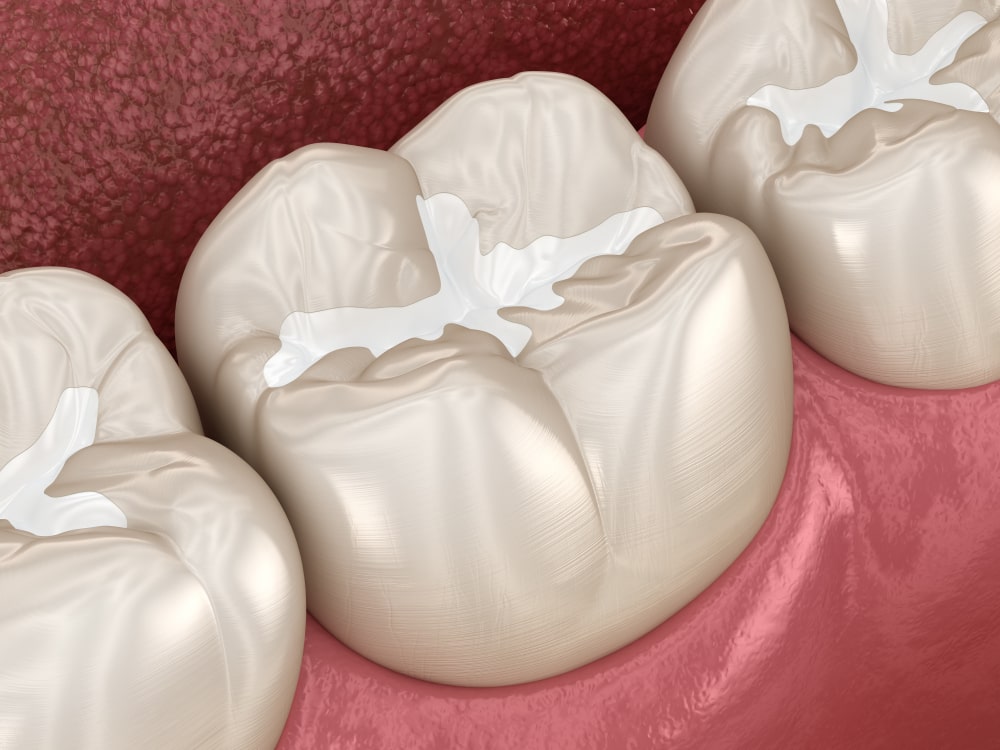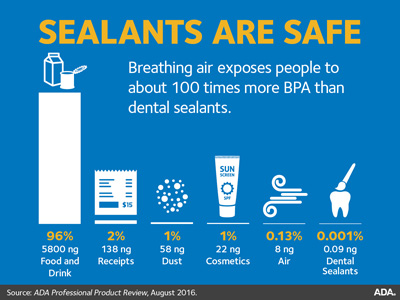It is an unfortunate fact that childhood cavities are an extremely common occurrence. So much so that tooth decay is considered to be the top cause of chronic childhood illness. While you may do your best to make sure your child is brushing and flossing everyday, there are also preventative measures that your child’s pediatric dentist may recommend to further protect your child’s oral health.
Of course routine dental cleanings and fluoride treatments are ideal ways to reduce the risk of tooth decay in children. However, in addition to these common preventive measures, your child’s pediatric dentist may also recommend the use of dental sealants. Like their name suggests, dental sealants are used to seal the tooth enamel in order to prevent decay-causing bacteria from forming cavities. When considering the use of a dental sealant, here are some helpful facts:
Used on Molars

Although dental sealants can be applied anywhere in the mouth, the most common location to have a sealant placed is over the molars. This is because the chewing surface of the molars are highly texturized, making them a common site for cavity development. Not only does their texture make it harder for children to properly brush, but molars have several grooves that can easily trap bacteria. Placing a dental sealant on the chewing surface of molars helps to make these grooves more shallow to prevent bacterial accumulation. Additionally, the sealant prevents the bacteria from coming into direct contact with the enamel.
Sealants are Effective
One question parents commonly ask is how effective sealants actually are. The good news is that dental sealants have been proven to be extremely effective against preventing tooth decay in children. For the first two years after they have been applied, the American Dental Association notes that they can prevent as much as 80% of cavities. This effectiveness then drops to 50% from the second to the fourth year. While sealants can safely remain on your child’s teeth for up to nine years, it is important to note that they do become less effective over time and should be replaced about every 2-4 years to maintain maximum effectiveness.
Not Visible
Another concern parents tend to have about dental sealants is whether or not they are visible when their child smiles, speaks, or laughs. Since dental sealants are made from a dental material called composite resin, they can be customized to a variety of colors. This means that your child’s dentist will match the color of the sealant to the natural color of your child’s teeth. In some cases, dental sealants may also be clear. The end result is an aesthetically pleasing method to protect your child’s teeth.
Easy Application
Not only are sealants effective and invisible, but they are also extremely easy to apply to your child’s teeth. First, your child’s teeth will need to be properly cleaned to ensure that all the plaque and bacteria has been removed from the surface of their teeth. Once the teeth are clean, then dental sealants can be applied by simply brushing them onto the surface of your child’s teeth. Then a special light is used to harden the sealant in place in only a matter of seconds without any discomfort to your child.
Safe

Last, but certainly not least, dental sealants are completely safe for your child. Although there has been some recent concern about the use of BPA during their production process, the American Dental Association has conducted extensive research to ensure the safety of sealants. While some sealants may contain trace amounts of BPA, your child is exposed to more BPA by breathing air than they are from dental sealants. Additionally, there are also BPA-free sealants that you may be able to choose.






